MONUMENTAL OBSESSIONS
mixed media - 2000:04
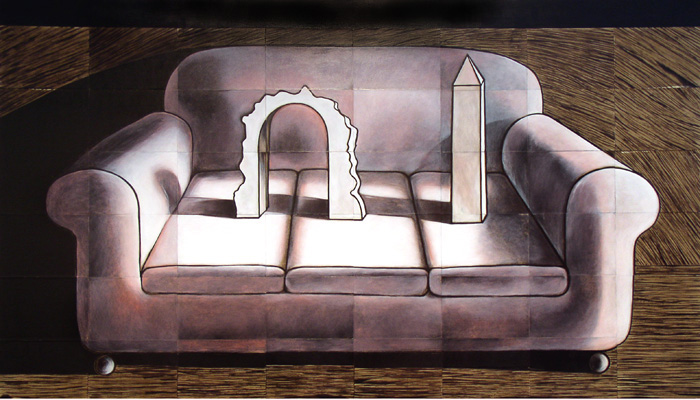 MO-couch
MO-couch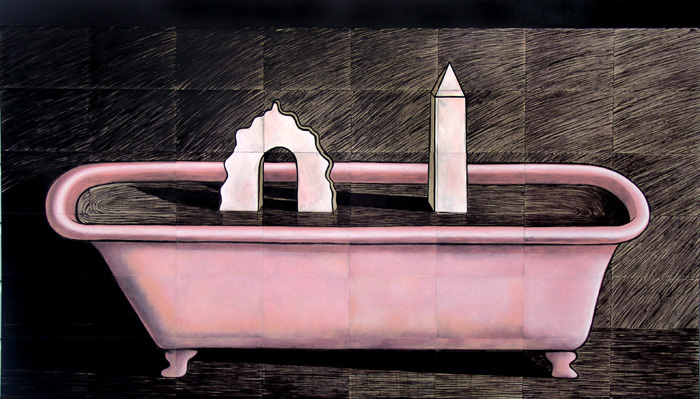 MO-bath
MO-bath 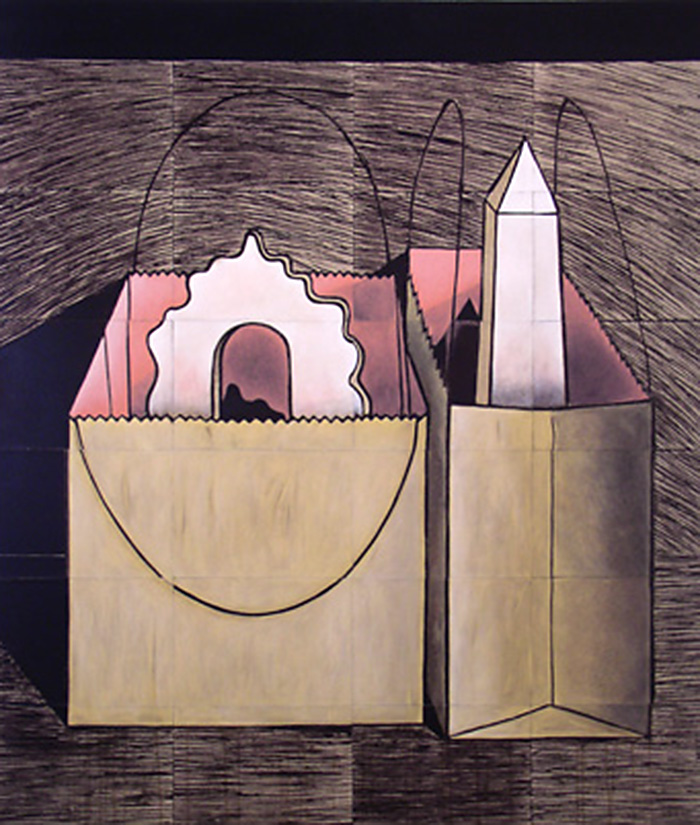
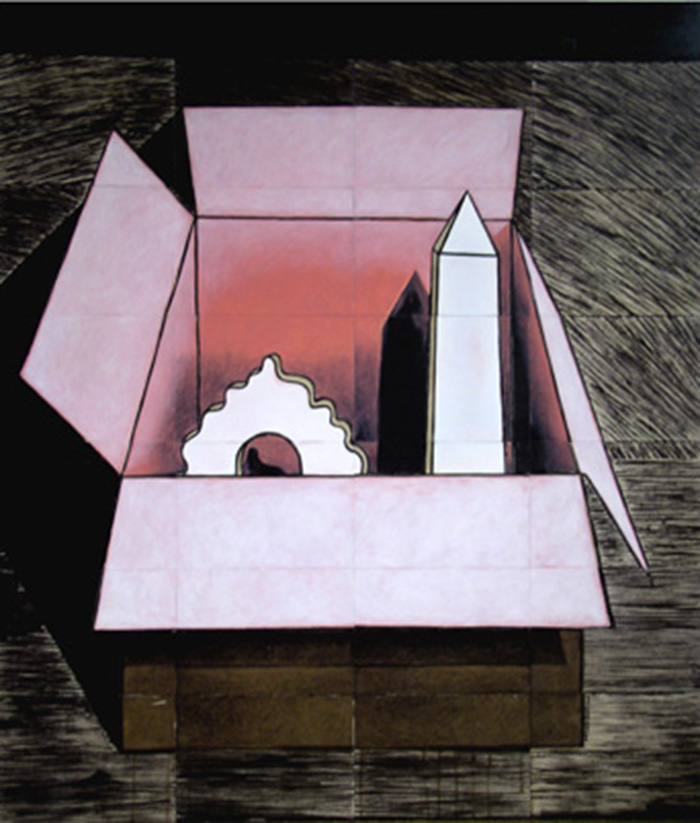
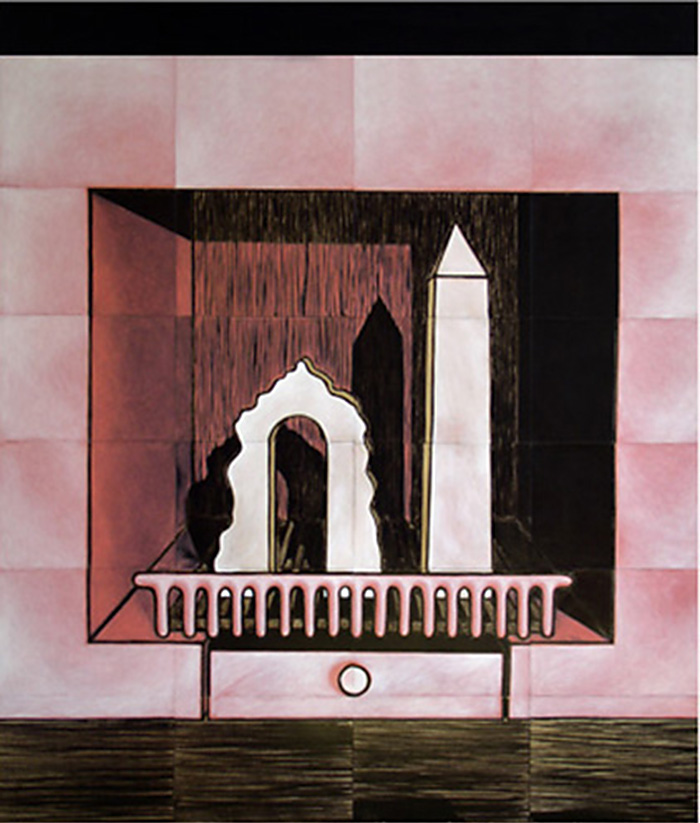

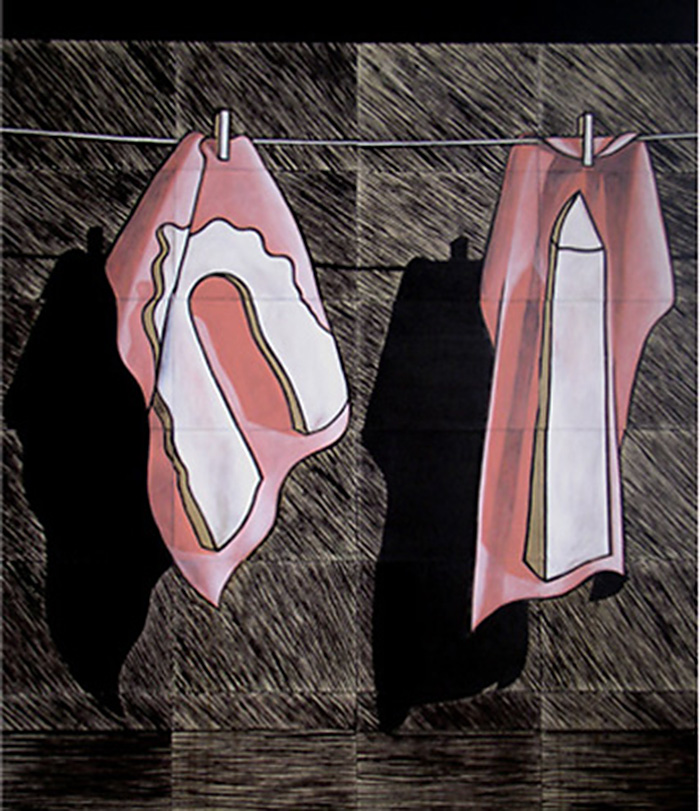
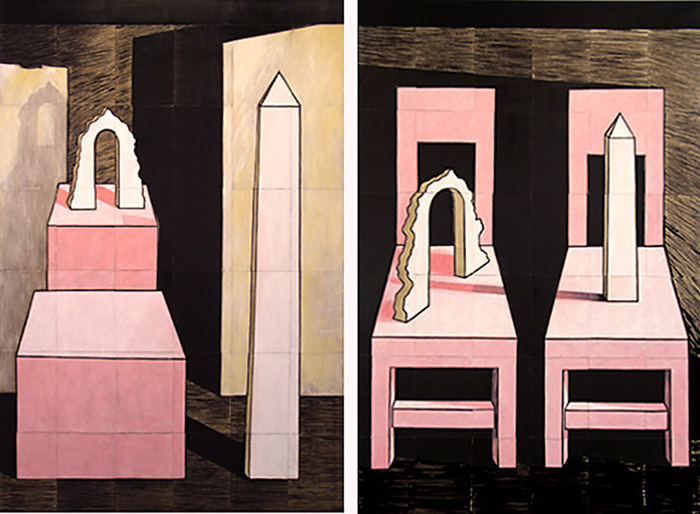 MO-door and chairs
MO-door and chairs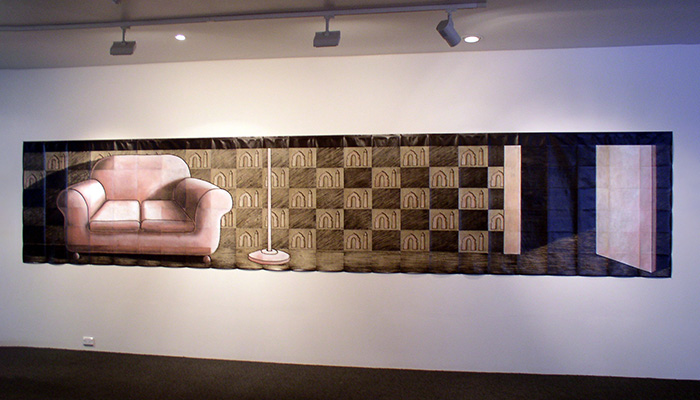
 MO-wallpaper and detail
MO-wallpaper and detail
Monumental obsessions
couch, bath (mixed media 2360mmx1360mm), bags, box, case, sheets (mixed media 1180mmx1360mm), door and chairs (mixed media 1230mmx1840mm)
Suburbia - mothermother iteration 22; group exhibition, NorthArt, Tāmaki Makaurau-Auckland, May-June, 2023![]() MO-Lithograph print, A4
MO-Lithograph print, A4
Photo credit; Sait Akkirman, artsdiary.co.nz
Bath Street Gallery, Tāmaki Makaurau-Auckland, Dec. 2004
Close your eyes for a moment. Now with your mind’s eye, try to capture images of some key objects in your home environment that speak volumes about the most fundamental functions of that space – be it social interaction, the unfolding of relationships, the caring for and sharing with others, the exploration of self. The domestic environment is potentially a space for some of the most challenging experiences in our entire lives. It is here we can encounter powerful emotions wrapped up in the complexities of relationships and human endeavour.
The objects at the core of this intensity, those items of furniture or utensils that you might now be thinking of, are often those embroiled in the most social or the most mundane of activities: a living room couch, the open fire, the clothes line, beds, the bath, the dining table, the laundry buckets and everyday kitchen items. Now remove the myriad of emotions surrounding these objects. Consider them instead for their potential symbolic nature, for what they can, in turn, tell you about a world far beyond their domestic context.
This is the world that Maree Horner is interested in, a world where the artist demands that the domestic objects she paints tackle a bigger job than that dictated by their obvious daily functions. They must work hard to create new and potent associations, indeed to challenge and provoke. As writer Roger Peters has said, “The whole weight of culture might, in the end, find its denouement in relation to a piece of furniture.”
Not every object is up to the job but by using selected ones from around her home as her primary visual imagery, Horner principally explores the nature of the relationship between the feminine and the masculine, between the mind and the body, between eroticism and fantasy. She deals with the internal and the external, the unspoken and the articulate, the provocative and the familiar.
A cardboard box, painted fleshy pink, could be read in feminine, nurturing terms, for example, while it can also be seen as an element in a still life composition. (The same can be said for her buckets, jugs and pots.) It can also operate as a monumental landscape element, taking on architectural forms and dictating the equation between space, form, volume and scale. In another example, the couch is a strong metaphor with direct human associations – it also has arms, legs, a back and spine but the shadows and crumpled cushions also create a new landscape within its folds.
The mixing up of scale serves to undermine existing power structures symbolically inherent in objects such as monumental marble archways and erect columns and to establish new, more meaningful ones. Horner paints each central object at a life size scale. Her passion for minimalist sculptural installation brings an aesthetic here of a pared down, controlled environment where the viewer’s body, placed in front of the life size objects, instinctively reacts as if standing before a three dimensional scene. You can, in fact, measure yourself in relation to the objects in front of you – like a fireplace or doorway – and therefore in relation to the internal dialogue of the works.
Taking these three key genres, the associations to body, the interest in still life constructions and the manipulation of internal and external landscapes, Horner dislocates the objects she paints and re-contextualises them, often with theatrical effect, so they become players in an uneasy socio-cultural debate.
Montumental obsessions - WallpaperCameo Wall Project - Te Tuhi, Manukau 6th March, April 2004
catalogue essay ︎
MO - couch and selected lithographs
Grodentz-works on paper, Wellington 2002
Vibe, issue 7, (2003) ︎
couch, bath (mixed media 2360mmx1360mm), bags, box, case, sheets (mixed media 1180mmx1360mm), door and chairs (mixed media 1230mmx1840mm)
Suburbia - mothermother iteration 22; group exhibition, NorthArt, Tāmaki Makaurau-Auckland, May-June, 2023
 MO-Lithograph print, A4
MO-Lithograph print, A4 Photo credit; Sait Akkirman, artsdiary.co.nz
Bath Street Gallery, Tāmaki Makaurau-Auckland, Dec. 2004
Close your eyes for a moment. Now with your mind’s eye, try to capture images of some key objects in your home environment that speak volumes about the most fundamental functions of that space – be it social interaction, the unfolding of relationships, the caring for and sharing with others, the exploration of self. The domestic environment is potentially a space for some of the most challenging experiences in our entire lives. It is here we can encounter powerful emotions wrapped up in the complexities of relationships and human endeavour.
The objects at the core of this intensity, those items of furniture or utensils that you might now be thinking of, are often those embroiled in the most social or the most mundane of activities: a living room couch, the open fire, the clothes line, beds, the bath, the dining table, the laundry buckets and everyday kitchen items. Now remove the myriad of emotions surrounding these objects. Consider them instead for their potential symbolic nature, for what they can, in turn, tell you about a world far beyond their domestic context.
This is the world that Maree Horner is interested in, a world where the artist demands that the domestic objects she paints tackle a bigger job than that dictated by their obvious daily functions. They must work hard to create new and potent associations, indeed to challenge and provoke. As writer Roger Peters has said, “The whole weight of culture might, in the end, find its denouement in relation to a piece of furniture.”
Not every object is up to the job but by using selected ones from around her home as her primary visual imagery, Horner principally explores the nature of the relationship between the feminine and the masculine, between the mind and the body, between eroticism and fantasy. She deals with the internal and the external, the unspoken and the articulate, the provocative and the familiar.
A cardboard box, painted fleshy pink, could be read in feminine, nurturing terms, for example, while it can also be seen as an element in a still life composition. (The same can be said for her buckets, jugs and pots.) It can also operate as a monumental landscape element, taking on architectural forms and dictating the equation between space, form, volume and scale. In another example, the couch is a strong metaphor with direct human associations – it also has arms, legs, a back and spine but the shadows and crumpled cushions also create a new landscape within its folds.
The mixing up of scale serves to undermine existing power structures symbolically inherent in objects such as monumental marble archways and erect columns and to establish new, more meaningful ones. Horner paints each central object at a life size scale. Her passion for minimalist sculptural installation brings an aesthetic here of a pared down, controlled environment where the viewer’s body, placed in front of the life size objects, instinctively reacts as if standing before a three dimensional scene. You can, in fact, measure yourself in relation to the objects in front of you – like a fireplace or doorway – and therefore in relation to the internal dialogue of the works.
Taking these three key genres, the associations to body, the interest in still life constructions and the manipulation of internal and external landscapes, Horner dislocates the objects she paints and re-contextualises them, often with theatrical effect, so they become players in an uneasy socio-cultural debate.
Essay by Sue Gardiner
Montumental obsessions - WallpaperCameo Wall Project - Te Tuhi, Manukau 6th March, April 2004
catalogue essay ︎
MO - couch and selected lithographs
Grodentz-works on paper, Wellington 2002
Vibe, issue 7, (2003) ︎